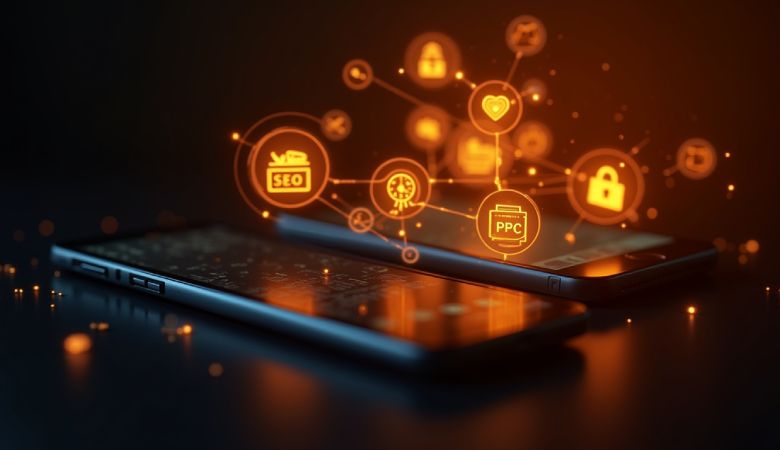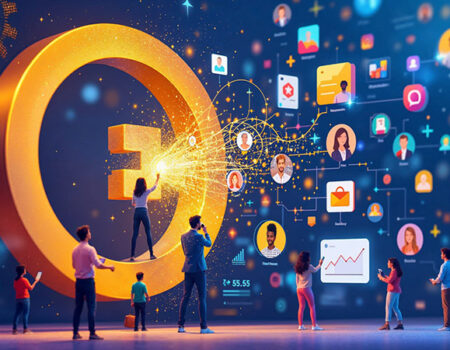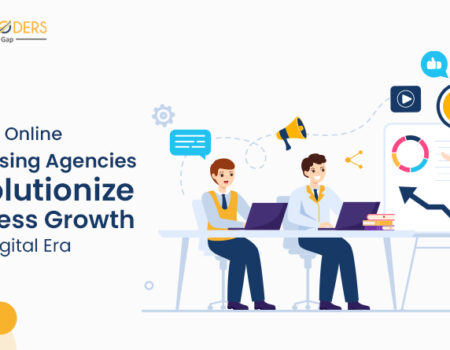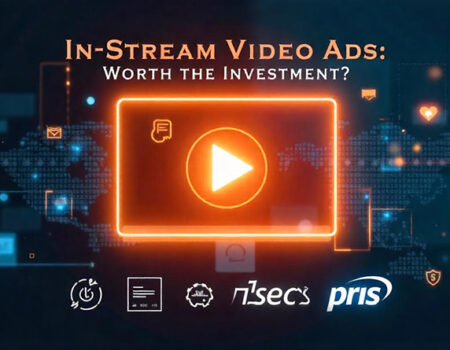Digital Marketing: Everything You Need to Know to Get It Right
In today’s digital age, marketing isn’t just about reaching people; it’s about meeting them where they are already: online. With over 5.5 billion internet users worldwide in 2024, having a strong digital marketing strategy is no longer optional—it’s essential.
This guide breaks down everything you need to know about digital marketing, using insights from the 2025 State of Marketing Report, based on feedback from more than 1,700 marketers. Keep reading to learn more!
What Is Digital Marketing?
Digital marketing, also known as online marketing, is how businesses promote their products or services using the internet. This includes using tools like search engines, social media, email, websites, and even text or video messages to reach new and current customers.
How Does a Business Define Digital Marketing?
Digital marketing plays a big role in helping people know about your brand or business. Today, most companies either have a website or are active on social media. If not, they usually have some type of online ads.
In simple terms, digital marketing means using different online tools and platforms to connect with people who spend a lot of time on the internet. Good digital marketers know how each part of their plan works together to meet their bigger goals.
Depending on what the business wants to achieve, marketers can use free or paid digital tools to run a campaign.
For example:
- A content marketer might write blog posts to get leads from an ebook.
- A social media marketer can promote those blog posts through paid or regular social media updates.
- An email marketer might follow up by sending more info through emails to those who downloaded the ebook.
Top Digital Marketing Channels in 2025:
According to 2025 State of Marketing Report found that these five digital marketing channels brought the best results last year:
- Email marketing
- Paid social media ads
- Shopping tools on social media (like Instagram shops)
- Website/blog with SEO
- Content marketing
Importance of Digital Marketing:
1. Focus on the Right People
Digital marketing helps you show your ads and content to people who are most likely to be interested in your product or service. You can target specific groups based on things like age, location, interests, or what they’ve searched for online. This means you don’t waste time or money showing your ads to the wrong audience. Instead, you reach people who are more likely to buy from you, which improves your results.
2. Saves Money
Compared to older marketing methods like TV or newspaper ads, digital marketing is much cheaper. You can start with a small budget and still get good results. It also lets you track how your ads are doing so you can stop spending money on things that don’t work. This way, even small businesses can compete with big brands by using affordable tools like social media, SEO, and email to grow their business.
3. Compete with Big Brands
Even if your business is small, digital marketing helps you compete with large companies. If you create good content that people find helpful, it can rank high on search engines like Google. You don’t need a huge budget to be seen online. Search engines care more about quality and relevance than brand size. So, with the right keywords and content, your business can get noticed, earn trust, and attract more customers.
4. Easy to Measure
One of the best things about digital marketing is that you can measure everything. You can see how many people visit your website, what they click on, and how long they stay. You can also track which ads bring in the most sales or leads. This helps you understand what’s working and what’s not. Unlike print ads, where you can only guess, digital marketing gives you real-time data to make smarter decisions.
5. Easy to Adjust
Digital marketing is flexible. If something isn’t working, you can change it right away. For example, if an ad isn’t getting clicks, you can pause it or try a new one. This helps you save money and improve your results faster. With traditional marketing like print or billboards, making changes takes time and costs more. Online, you can test ideas quickly, try new strategies, and find out what works best for your business.
6. Better Leads and Conversions
Digital marketing helps you get better leads — people who are more likely to become your customers. Since you’re targeting specific audiences, your message reaches the right people. It’s also easier to track how many people sign up, buy something, or contact you. By checking what works and making improvements, you can turn more leads into sales. This means you get more value from your marketing efforts and grow your business faster.
7. Connect at Every Step
Digital marketing lets you stay in touch with your audience from the moment they learn about your business to when they decide to buy. You can use content, emails, or ads to guide them along the way. Even if they don’t buy right away, they may remember your brand for later. This helps you build trust, answer questions, and support them throughout their buying journey, making them more likely to choose your business.
Key Types of Digital Marketing:
1. Content Marketing:
This involves creating and sharing useful content to build awareness, increase website traffic, and get leads.
Where Content Marketing works:
- Blog Posts: Share knowledge and improve your ranking on Google.
- Ebooks/Whitepapers: Offer detailed information and collect contact details from readers.
- Infographics: Use visuals to explain ideas.
- Audio/Video: TV, YouTube, and radio help reach more people.
2. Search Engine Optimization (SEO):
SEO helps your website show up higher in search engine results. This can bring more free visitors to your site.
Where it works: Websites, blogs, infographics
Types of SEO:
- On-Page SEO: Focuses on the content on your website pages. Using the right keywords helps answer people’s questions and improve your page ranking.
- Off-Page SEO: Focuses on links from other websites (called backlinks). The more trusted websites link to you, the better your site ranks.
- Technical SEO: Focuses on the backend of your site like how fast it loads, how it’s coded, and how images are used.
3. Social Media Marketing:
Using social media to promote your brand, drive traffic, and get leads.
Popular platforms:
- X (formerly Twitter)
- Snapchat
Tips:
- Schedule posts using tools like HubSpot.
- Track results and manage messages in one place.
- Try to create content that people will want to share.
4. Pay-Per-Click (PPC):
You pay each time someone clicks your ad. It helps bring traffic to your site quickly.
Where it works:
- Google Ads: Appear at the top of search results.
- Facebook Ads: Reach people through customized ads.
- X Ads: Promote tweets or accounts.
- LinkedIn Sponsored Messages: Send ads directly to users.
5. Marketing Automation:
Using tools to automate tasks like emails, social posts, and tracking campaigns.
Examples:
- Email Newsletters: Send updates to subscribers.
- Social Post Scheduling: Save time by scheduling in advance.
- Lead Workflows: Automatically send content to interested users.
- Campaign Reports: Track all marketing actions in one place.
6. Native Advertising:
Ads that look like regular content on a platform.
Examples:
- Sponsored articles on news websites
- Ads on social media that blend in with posts
7. Affiliate Marketing:
You promote someone else’s product or service and earn a commission if someone buys through your link.
Where it works:
- YouTube video ads
- Blog or website links
- Social media posts
8. Email Marketing:
Send emails to promote content, products, or events.
Examples:
- Blog updates
- Welcome messages
- Promotions
- Tips and helpful info
9. Sponsored Content:
You pay others to write or share content about your brand.
Examples:
- Influencer posts
- Sponsored blogs or articles
10. Inbound Marketing:
This method focuses on attracting customers in a helpful and non-intrusive way.
Examples:
- Blogging vs. pop-up ads
- Video content vs. TV commercials
- Useful email lists vs. spam
11. Online PR:
Get your business featured in blogs or news sites.
How it works:
- Talk to reporters on social media.
- Reply to online reviews.
- Respond to comments on your website or blog.
12. Influencer Marketing:
Work with influencers to promote your brand to their followers.
Top platforms: Instagram and Facebook
Micro-influencers (10k–99k followers) often have more trust in their audience, lower costs, and better results. Their content feels more real and honest.
13. Search Engine Marketing (SEM):
Use paid ads on search engines to reach people who are looking for products or services like yours.
Popular tools: Google Ads, Bing Ads
These ads appear at the top of search results and get quick attention.
14. Instant Messaging Marketing:
Send messages directly to customers using apps like Facebook Messenger, WhatsApp, or text.
Use it for:
- Flash sales
- Order updates
- Quick customer support
Inbound Marketing vs. Digital Marketing: What’s the Difference?
Inbound marketing is a way of using online content to attract, help, and keep customers happy.
Digital marketing is a general term that includes all kinds of marketing done online — whether it’s inbound or outbound.
Some people compare digital marketing and inbound marketing, but digital marketing doesn’t separate the two. It includes all online marketing, whether it’s trying to pull people in or push a message out.
For example, outbound digital marketing shows ads to a lot of people, even if they’re not interested. Like banner ads that pop up while you’re reading a blog — they often try to sell something right away.
Inbound digital marketing, on the other hand, uses helpful content to bring the right people to your website. These people are already looking for what you offer.
One great example of inbound content is a blog. It helps people find your website when they search for topics related to your business.
Does Online Marketing Work for Every Business?
Yes! Digital marketing can work for any kind of business. It doesn’t matter what you sell — it all starts with knowing your audience and creating content they find useful.
However, not all businesses will use the same digital marketing plan. Let’s look at two types:
1. B2B Digital Marketing (Business to Business)
If your business sells to other businesses, your goal is probably to get leads — people who might become customers.
You want to guide those leads to your website and encourage them to contact your sales team.
In this case, you might focus more on platforms like LinkedIn, where professionals and business owners spend their time.
2. B2C Digital Marketing (Business to Consumer)
If you sell directly to everyday customers, your goal is often to get them to buy online — without needing to talk to anyone.
You might focus less on collecting leads and more on making the buying process quick and easy.
This means you may need strong calls to action (like “Buy Now” or “See More”) and catchy product descriptions.
Social platforms like Instagram or Pinterest often work better for B2C brands than LinkedIn.
What Kind of Digital Content Should You Make?
The content you create depends on what your audience needs and where they are in the buyer’s journey — from learning about you to deciding to buy.
First, build buyer personas to understand your audience’s goals and problems. Then, create content that helps them.
This is called content mapping — matching your content to:
- The type of person (using buyer personas)
- How close they are to buying (called lifecycle stage)
Here’s what content works best at each stage:
1. Awareness Stage:
This is when people are just starting to look for answers.
- Blog posts – Great for getting traffic from search engines if you use the right keywords.
- Infographics – These are easy to share and help your content spread on social media.
- Short videos – Quick videos can catch attention and help new people discover your brand on Instagram, TikTok, or YouTube.
2. Consideration Stage:
At this point, people are looking for more detailed information.
- Ebooks – More in-depth than blogs. People may give their contact info to download them.
- Research reports – Useful for businesses and can also get shared in the news.
- Webinars – These are interactive and great for teaching more complex topics.
3. Decision Stage:
Now people are close to buying. You want to build trust.
- Case studies – Show real examples of how your product helped someone else.
- Testimonials – Short quotes or reviews from happy customers. For fashion brands, this could be customer photos from social media.
Partner with our Digital Marketing Agency
Ask Engage Coders to create a comprehensive and inclusive digital marketing plan that takes your business to new heights.
Conclusion:
Digital marketing is always changing, and staying updated is key to success. At Engage Coders, we help businesses grow by using proven digital strategies that work today, not outdated tactics from the past. With 9+ years of experience and over 500 successful projects, we know how to turn ideas into results. Whether you’re a small startup or a large company, get in touch with us to accelerate your business in the digital world with smart, results-driven marketing strategies.







